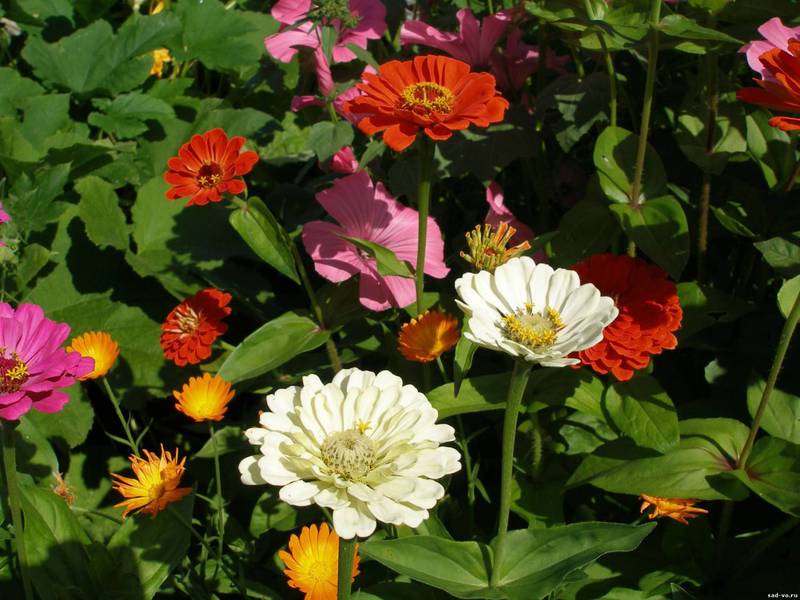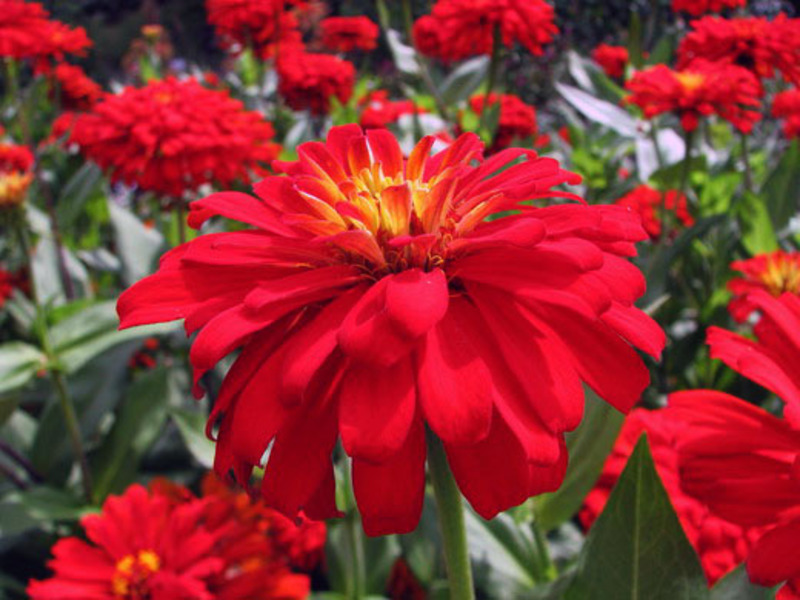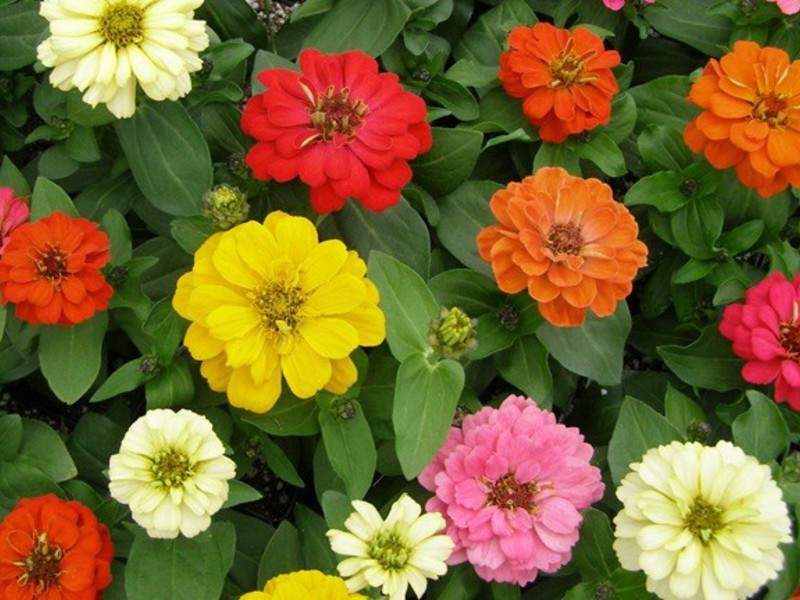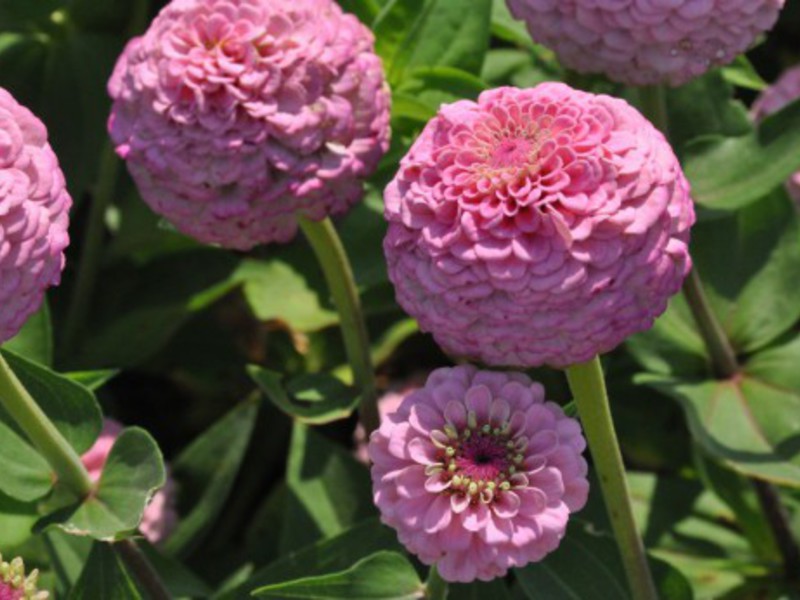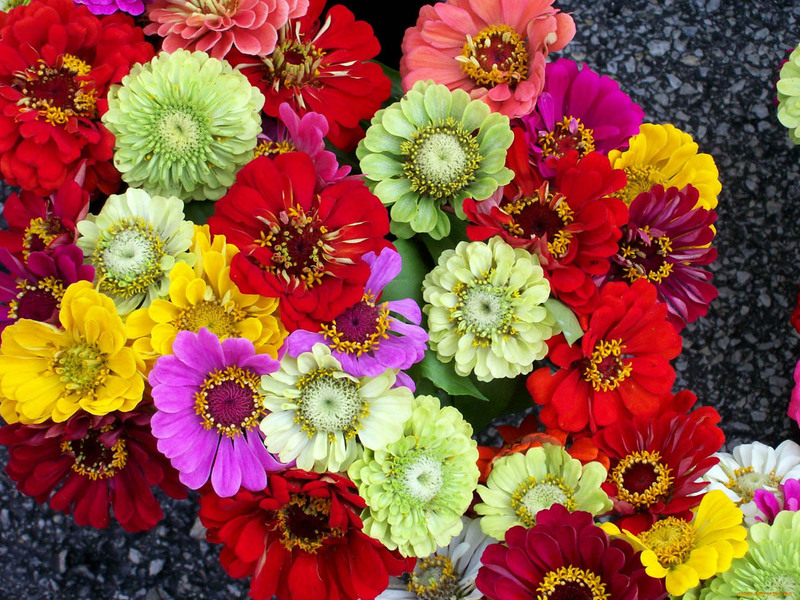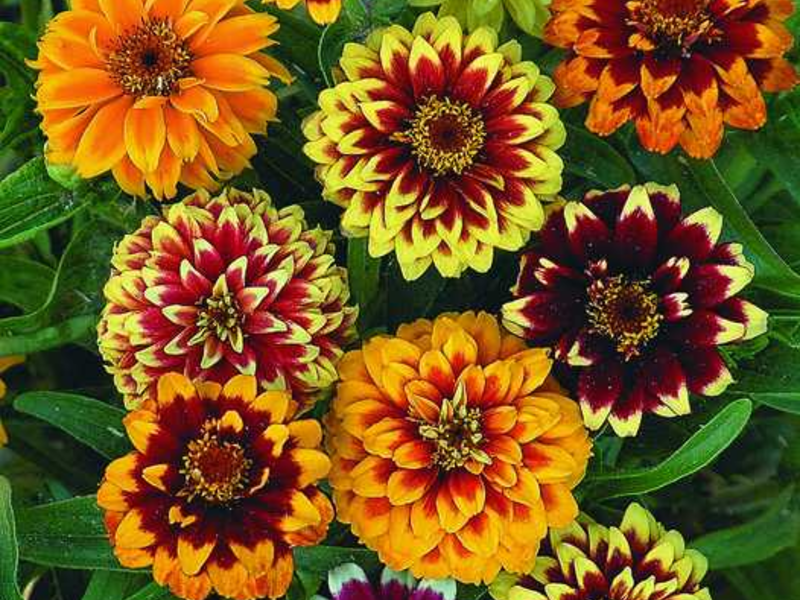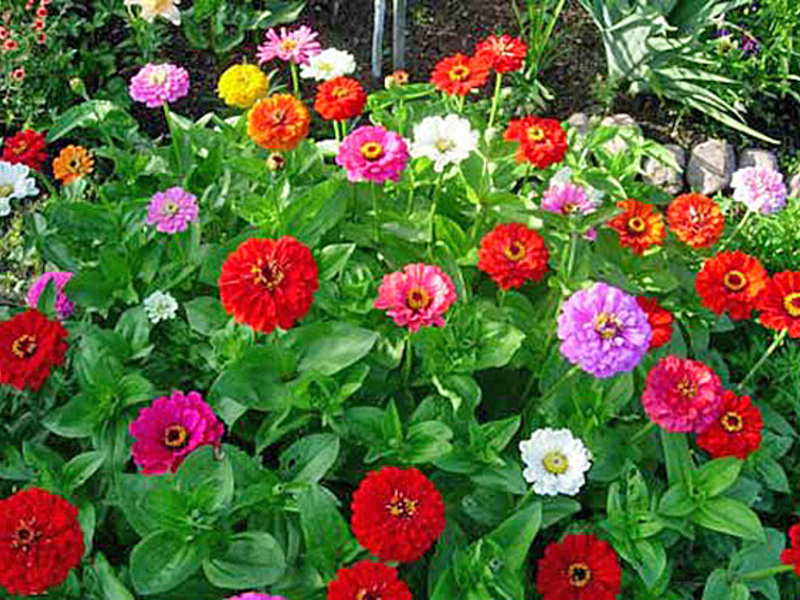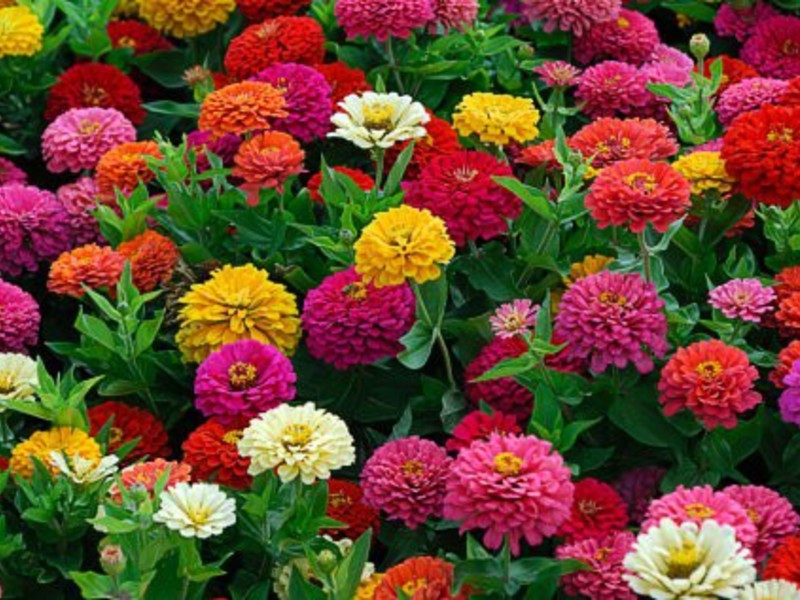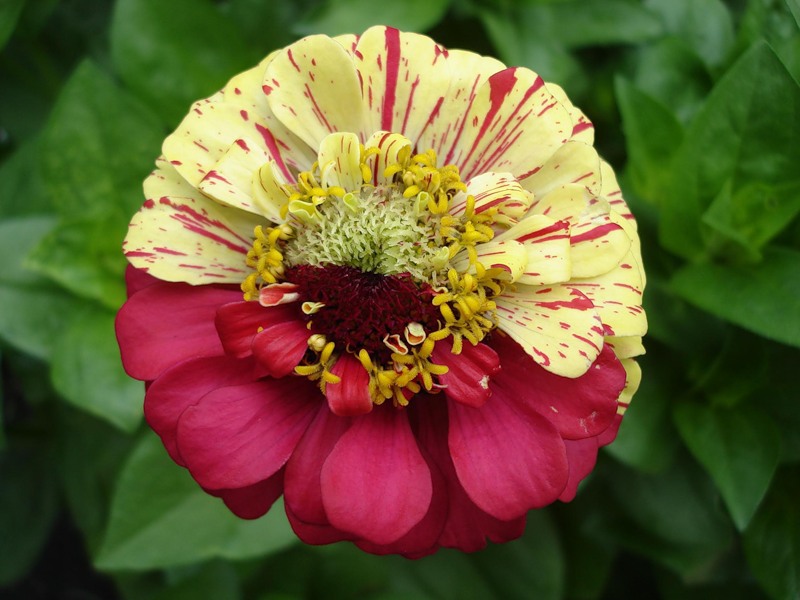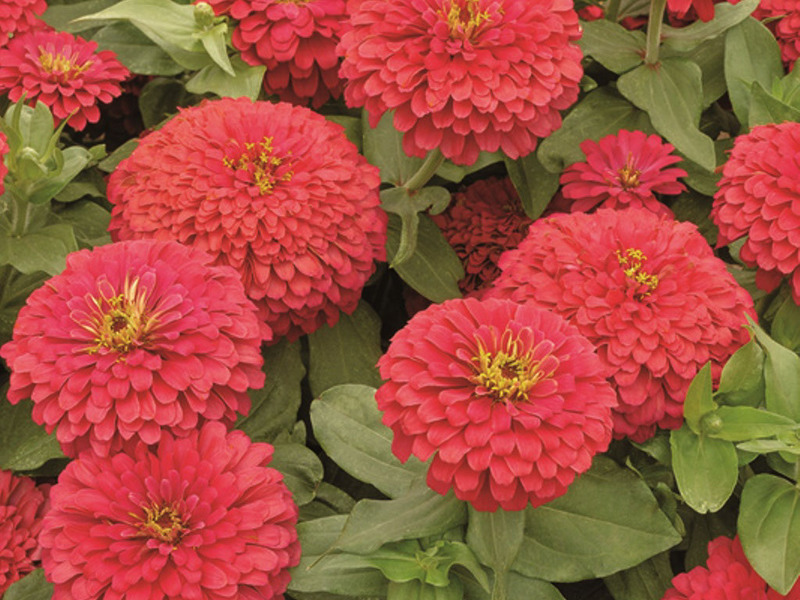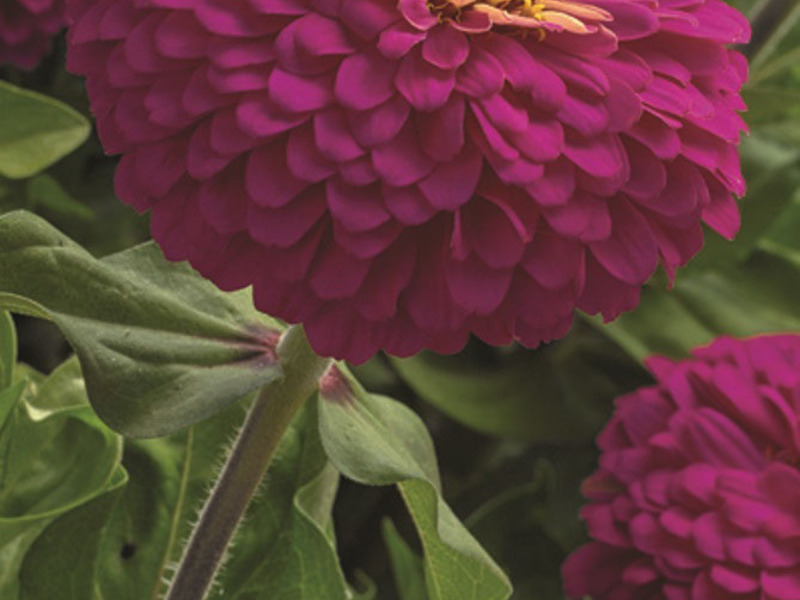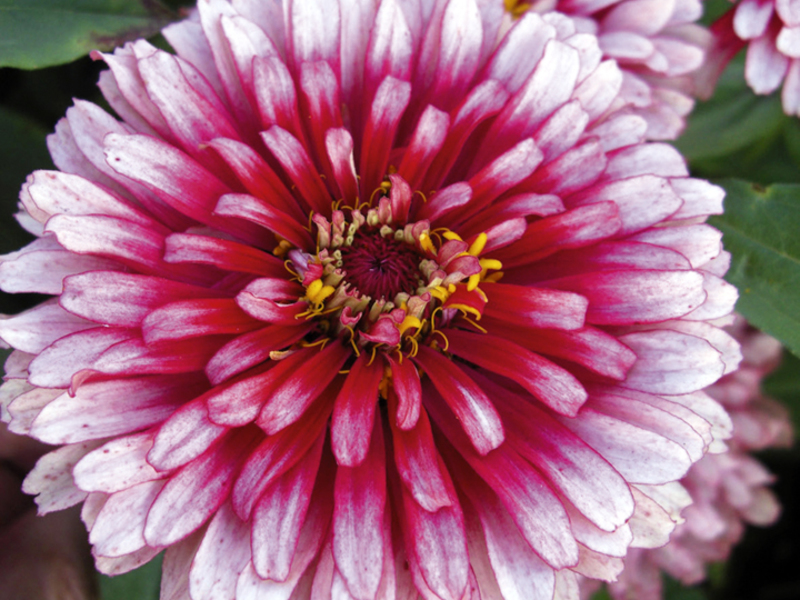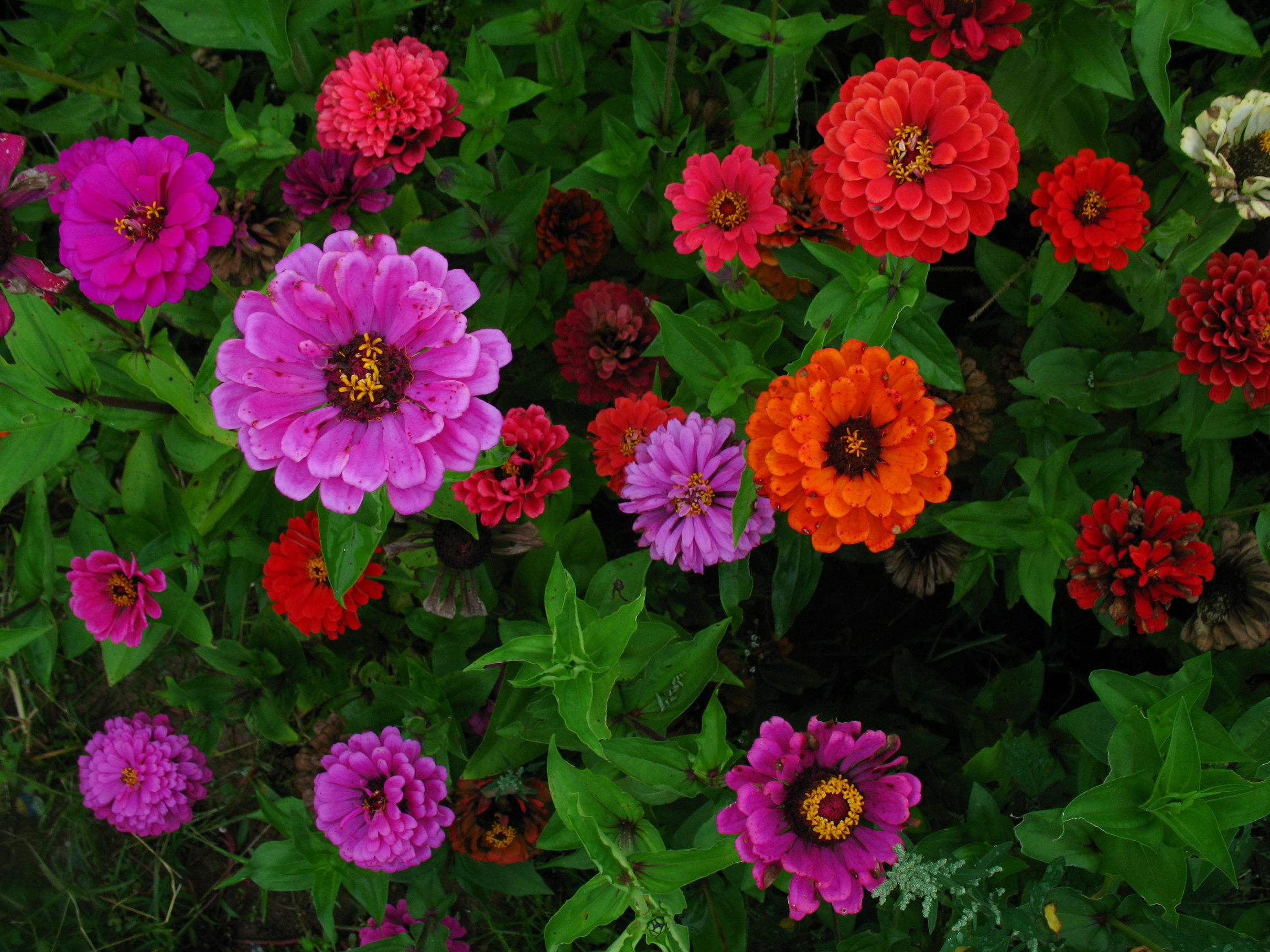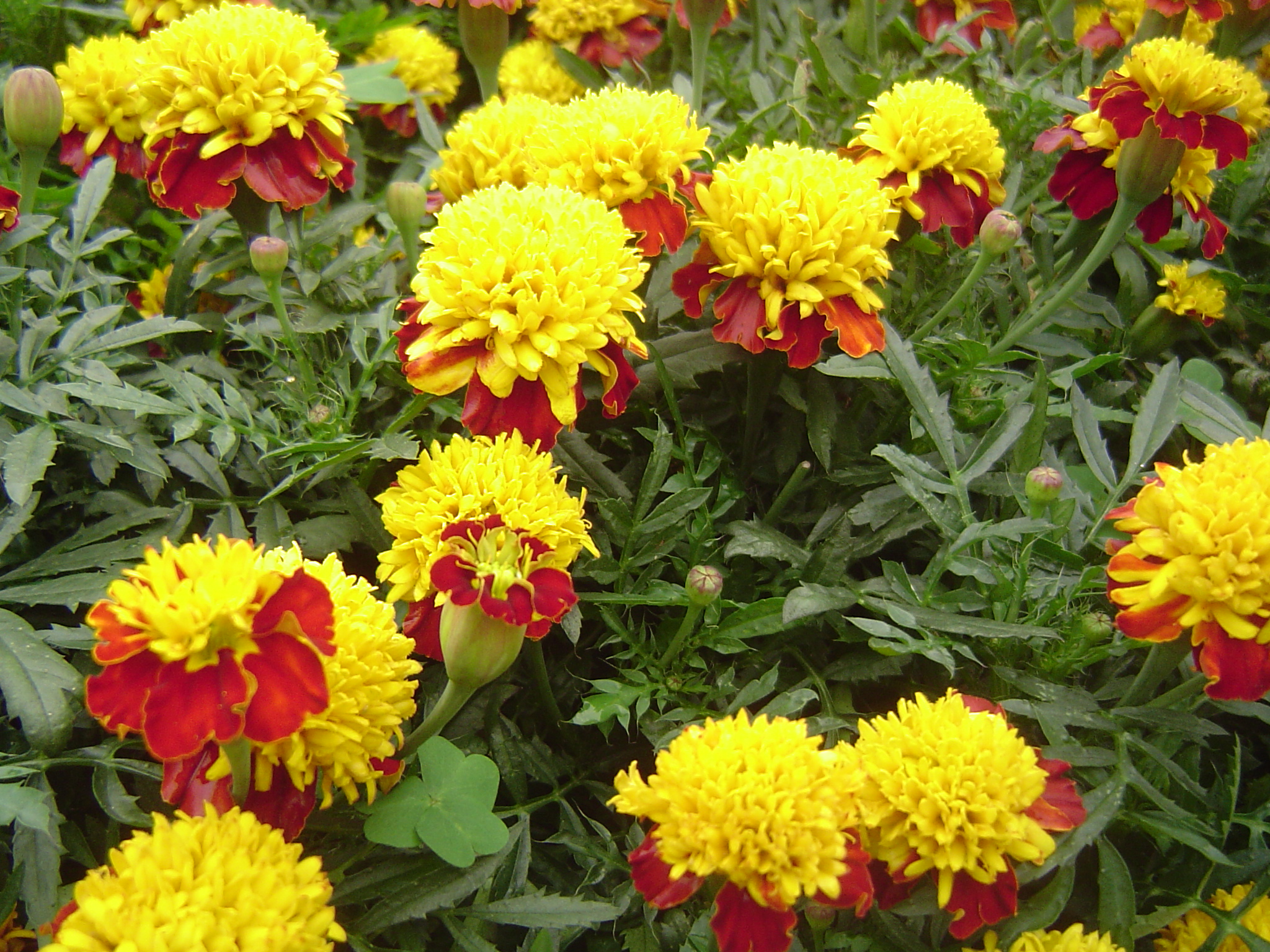Zinnia is a perennial or annual herb. There are about 22 types of zinnias, but only two varieties of this annual flower are used in decorating personal gardens. In its natural environment, this plant grows mainly in South America. Zinnia came to Europe in 1795.
Zinnias have gained popularity not only due to their attractive appearance. Here several advantageswhich will make you love these plants even more:
- Constant flowering. The more flowers you pinch off the zinnia, the more flowers will appear.
- Any height. Among the types of zinnias are both low and high; with them you can easily turn into any fantasy.
- Lots of colors. Zinnias can be of different colors, except blue, so they can be easily combined with annuals or perennials, deciduous grasses and plants.
- A feast for butterflies and birds. Plant your zinnias and watch your backyard come to life with the arrival of a large number of winged creatures.
- Minimal care after planting. Unpretentious plants will delight the eye, and you will not need to take much care of them.
Content
Zinnia: description, types and photos
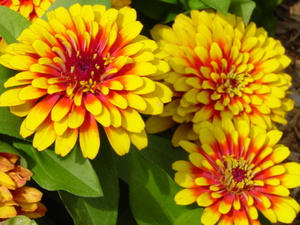 Zinnias are perennial and annual, subshrub and herbaceous flowers... Leaves sessile, ovate with a pointed apex, whorled or oppositely located on the stem, whole. Inflorescences are single baskets, apical, rather large, sessile or on long, thickened peduncles on top. The wrapping of the baskets is tiled, multi-row. The marginal flowers are ligulate, painted in different colors: red, purple, yellow, pink, white, lilac, purple, grow densely, with a notched or rounded curvature; internal - tubular, small.
Zinnias are perennial and annual, subshrub and herbaceous flowers... Leaves sessile, ovate with a pointed apex, whorled or oppositely located on the stem, whole. Inflorescences are single baskets, apical, rather large, sessile or on long, thickened peduncles on top. The wrapping of the baskets is tiled, multi-row. The marginal flowers are ligulate, painted in different colors: red, purple, yellow, pink, white, lilac, purple, grow densely, with a notched or rounded curvature; internal - tubular, small.
In the gardening of the garden, two annual varieties are used - Zinnia narrow-leaved and Zinnia graceful, which gave rise to many varieties of garden zinnias and which are quite diverse in decorative properties. Zinnias are very popular in America.
Zynias: planting and care
Zinnia is heat-loving and light-loving flowerthat does not tolerate frost. For long-lasting and abundant flowering, it requires planting in a soil with a neutral reaction and with nutrients. The place allocated for cultivation is first dug up, and then leaf soil, compost or humus are added at 9-11 kg per 1 sq. From fertilizers add 1 tbsp. nitrophosphate, potassium and superphosphate and dug up again on one bayonet.
It develops well when planted in a sunny area, protected from drafts. When leaving, it does not tolerate prolonged drought and an excess of water in the ground, in which the flowers become smaller. The plant in the flowerbed responds to the introduction of baits not only during planting, but also in baits, carried out several times a season.
The first zinnia groundbait is made before budding: 11 liters. water is diluted with 1 tbsp. urea, 2 tbsp. means "Flower".
The next groundbait is done at the beginning of budding: 11 liters.water is diluted with 1 tbsp. liquid means "Rainbow" and "Agricola for flowering bushes."
Before bait, by all means covered with wood ash in a ratio of 2-3 tbsp. for 1 sq. m. When opening the buds, the flowers are treated with "Bud".
Zinnia landing
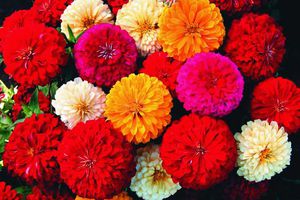 Typically, zinnias propagate by seed through seedlings, as plants are sensitive even to mild frost. Before planting, you need to soak the seeds in a damp cloth to select viable seeds. Old seeds germinate in about 7-11 days, fresh seeds in a few days. Sow on the windowsill in peat containers, in early April, planting to a depth of 1 cm. The best temperature for growth 21-25 gr... If the seedling is stretched out, it can be buried. The plants quickly develop adventitious roots. In early summer, the seedlings are hardened by bringing flowers to the loggia.
Typically, zinnias propagate by seed through seedlings, as plants are sensitive even to mild frost. Before planting, you need to soak the seeds in a damp cloth to select viable seeds. Old seeds germinate in about 7-11 days, fresh seeds in a few days. Sow on the windowsill in peat containers, in early April, planting to a depth of 1 cm. The best temperature for growth 21-25 gr... If the seedling is stretched out, it can be buried. The plants quickly develop adventitious roots. In early summer, the seedlings are hardened by bringing flowers to the loggia.
Planting is done after the end of the spring frost, the flowers withstand a distance of 32-36 cm from each other. The flowers can easily transfer the transplant with an earthen ball. Each flower on the bush keeps for quite a long time, up to a month. Seeds germinate up to 3 years.
Cynias in the design of the infield
They are grown in flower beds, flower beds, for cutting, in large tracts and groups. Tall species are ideal for decorating flower beds and flower beds. For containers and balconies, stunted and medium-sized (16-21 cm) species are suitable. These varieties bloom continuously and profusely, are resistant to wind, do not require much maintenance. Zinnias are especially attractive as a group. Plants stand well in water and retain color brightness long time. They are cut off when the inflorescence is three-quarters open, the ends of the stems are cut in hot water or fired. Freshness can be returned to a wilted bouquet by first updating the lower oblique cut and placing it in hot water.
Low-growing zinnias can be dug out with an earthen lump before frost, planted in large pots, watered thoroughly and kept indoors on a light windowsill. In this case, they will decorate the room for a couple of weeks.
Varieties and varieties of zinia: photo and description
Zinnia graceful
A fast-growing and annual plant, with stable and erect stems, 35-95 cm high. Leaves are sessile, whole-edged, ovate-pointed, dark green, opposite. Leaves and stems have a hard edge. Inflorescences - baskets 4-16 cm in circumference. Ligulate flowers are white, bright, yellow, cream, red, orange, purple, lilac, lilac. In shape - rolled lengthwise into a tube, linearly elongated or elongated-oval. It blooms for a long time and very profusely from early July until frost. Bears fruit. The seeds germinate for 3 years.
By the height of the zinnias, the shape of the reed flowers and the structure of the inflorescences, the flowers divided into several groups:
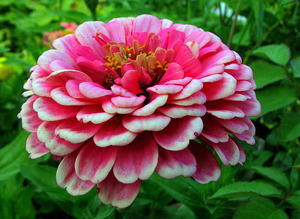 chrysanthemum;
chrysanthemum;- dahlia;
- gaiardi;
- scabiosa;
- fantasy;
- pompom.
In our country, the most popular varieties of pompom and dahlia zinnias, sometimes a fantasy variety is planted.
As a rule, seeds are commercially available in a mixture, but today, with the development of garden design, the need for seeds, divided by color and variety, has increased.
Dahlia group of graceful zinnia
Dahlia zinnias are compact, spreading or vigorous shrubs, 65-95 cm tall, with few branches of the lower order. The leaves are large, up to 14 cm long. Terry inflorescences, large, hemispherical, 11-16 cm in circumference... Reed flowers are tiled with slightly raised edges, elongated-lobed appearance.
Some varieties of dahlia zinnia
 Raspberry Monarch is a bush 65-76 cm high, spreading. Inflorescences are dense, double, sometimes large and loose, dark red, 12-14 cm in circumference. Inflorescences that bloom 17-26. Blooms from early summer until frost.
Raspberry Monarch is a bush 65-76 cm high, spreading. Inflorescences are dense, double, sometimes large and loose, dark red, 12-14 cm in circumference. Inflorescences that bloom 17-26. Blooms from early summer until frost.
Violet is a bush 64-80 cm high, spreading. Inflorescences are dense, double, 11-13 cm in circumference, purple, of different shades. Inflorescences that bloom 17-24. Blooms from early summer until frost.
Orange King - bush 66-75 cm high, sprawling. The inflorescences are large, bright red-orange, medium density, double, 13-16 cm in circumference. Inflorescences that bloom 19-23. Blooms from early July until frost.
Lavender Queen is a bush 70-85 cm high, spreading. Lavender inflorescences with a purple hue, terry, dense, 11-13 cm in circumference. Inflorescences that bloom 18-24. The Lavender Queen blooms from early summer to frost.
Purple Prince - plant height up to 65 cm, with large purple inflorescences, blooms from late June until frost.
Envy - plant height 64-75 cm, with green double inflorescences, in a circle of 11-14 cm. The most unusual and, most likely, from this the most popular type of zinnia today. Begins flowering from early July until frost. Looks very advantageous against a contrasting background of purple and pink flowers.
polar bear - bush 64-70 cm high, compact. Inflorescences are dense, densely double, 13-16 cm in circumference, white with a slight green tint. Inflorescences that bloom 16-21. Blooms from early summer until frost.
Tango is a bush 64-75 cm high, semi-spreading. Inflorescences are loose, double, red-orange, large, 8-12 cm in circumference. Inflorescences that bloom 17-29. Blooms from early summer until frost.
Rose is a bush 55-70 cm high, spreading. Inflorescences are large, medium-dense, terry, 11-13 cm in circumference, pink in different tones. Inflorescences that bloom 16-21. Blooms from early summer until frost.
Purple - a bush 65-85 cm high, spreading. Inflorescences are large, loose, terry, 11-14 cm in circumference, rich red. Blooms from early summer until frost.
Cherry Queen - plant height up to 75 cm, with large rich cherry baskets blooming from early summer to frost.
Pompom group of graceful zinnia
These are shrubs 44-60 cm high, densely branched, compact, with a large number of branches, 2-4 rows. The leaves are small. Inflorescences are small, rounded, cap-shaped, 4-5 cm in circumference, terry, very dense. Reed flowers are tiled, small. Flowering is simultaneous and abundant.
Varieties of pompom zinnia:
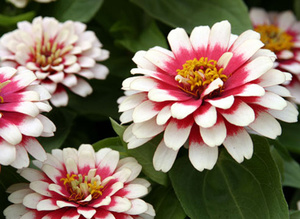 Tom-Tamb is a compact bush 41-50 cm high. Inflorescences are very dense, double, 3.5-7 cm in circumference, flat, cap-shaped, bright red, do not fade in the sun. Inflorescences that bloom 31-42. Blooms from early summer until frost.
Tom-Tamb is a compact bush 41-50 cm high. Inflorescences are very dense, double, 3.5-7 cm in circumference, flat, cap-shaped, bright red, do not fade in the sun. Inflorescences that bloom 31-42. Blooms from early summer until frost.- Little Red Riding Hood is a practically spherical bush, densely double, 51-61 cm high. Inflorescences are dense, densely double, 5-6 cm in circumference, from truncated-conical to almost round, deep red, do not fade in the sun. Inflorescences that bloom 64-75. Blooms from early July until frost.
- There is a hybrid Thumbelina for sale. Shrub up to 51 cm high with very dense, double inflorescences, in a circumference of 3.5-7 cm, blooms from early summer until frost.
Zinnia narrow-leaved... An erect, annual plant, has the shape of a branched bush 34-44 cm tall. Leaves are pointed, lanceolate or elongated, sessile, with a wide base, up to 7.5 cm long. Inflorescences up to 5.5 cm in circumference, small, bright orange, monochromatic, sometimes ligulate flowers are semi-double and simple, with dark orange and red tips at the base. Tubular - black or dark brown. Blooms from early July until frost. Bears fruit. Seeds germinate up to 3 years. Achenes are oval-wedge-shaped, strongly flattened.
Solar circle... The bush is highly branched, 21-26 cm high. Inflorescences 3.1-3.6 cm in circumference, terry. The ligulate flowers are rich orange at the base and reddish-brown at the ends. Tubular - orange. Abundant flowering until frost.
Zinnia is prized by gardeners for its splendor, beauty, and a subtle scent that does not cause headaches. Even when cut, flowers can remain fresh for about a half month. Experienced growers consider these flowers to be simply a godsend for their extraordinary beauty, unpretentiousness in care and ease of growing. If you are faced with the task of decorating your backyard territory, then zinnia is the perfect solution.
